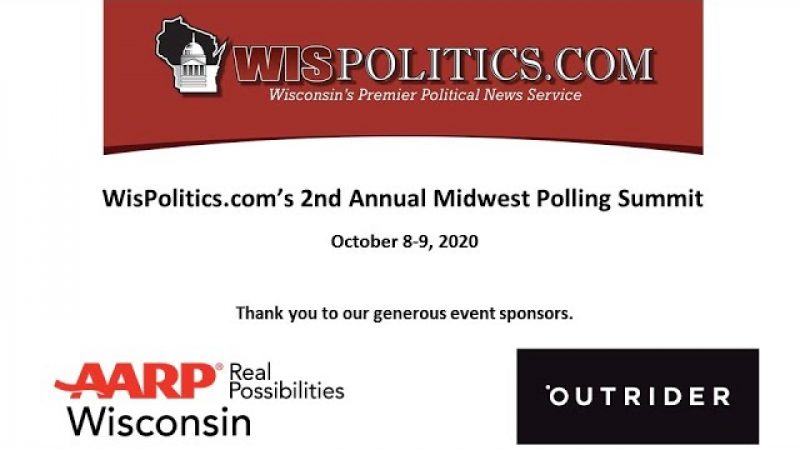Pollsters say the difference between the upcoming presidential election and the race in 2016 is a shrinking middle ground of undecided voters caused by deeply entrenched partisanship and a lack of prominent third-party candidates.
Barry Burden, director of UW-Madison’s Elections Research Center, said at day two of WisPolitics.com Midwest Polling Summit that Donald Trump’s surprise win in 2016 was fueled in part by voters opting for candidates outside the two major parties. But said he didn’t anticipate a repeat of that behavior this year.
“That third-party vote is really going to be squished down to a very small number this time around, and I think that presents some challenges for Trump,” he said during the Oct. 9 virtual event.
This time around, Burden said third-party and nonvoters from 2016 are now “very much on (Joe) Biden’s side.”
“It’s not impossible that Trump could claw back and pull this together but I think right now, it’s difficult to see what that path is,” he said.
Sarah Simmons, a veteran GOP pollster who now works at Purple Strategies, offered a less optimistic prognosis for the president.
“I got an email this morning from a Republican pollster friend that just said, ‘total collapse,’” she said. “He was trying to hold the line when we talked earlier in the week and he just said, ‘No, it’s really bad.’”
Still, Simmons noted it has been very difficult for pollsters to reach non-college educated white men, a major component of Trump’s base. She said she was having a “nervous churn” in her stomach as to whether that group is being captured by polling.
“I think that’s a lot of what we saw last cycle as well, and that’s a real challenge moving forward,” she said.
Emily Swanson, director of public opinion research for The Associated Press, said she saw far more stability in this year’s race than in 2016 but was “occasionally feeling some … deja vu and wouldn’t want to say that anything is over yet.”
Unlike in 2016 though, Swanson said the Dem nominee doesn’t face the same depth of unpopularity.
“I think it’s different when there are two deeply unpopular candidates versus one deeply unpopular candidate and one who maybe there are some voters who feel a little mad about,” she said. “It would be fairly unprecedented, but (Trump) could hypothetically thread the needle.”
Meanwhile, Penn State political science and African American studies Prof. Ray Block said pollsters may need to rethink the battle over swing voters.
“The swing might not necessarily be between the candidates but it might be between not going out to vote at all,” Block said. “We’re seeing a lot of that with the African-American centered polling that we’re doing.”
Block said there will be much to be learned about “narratives about the illegitimacy of the election and their influence on turnout,” particularly in minority communities.
Marquette University Law School Poll Director Charles Franklin predicted Wisconsin would see record-breaking turnout come November. Franklin said based on the percentage of people who say they’re absolutely certain they’re going to vote or are very excited about voting, he expected some 3.1 million ballots to be cast in the state. That’s just above the state’s previous record of some 3 million voters.
“I’d be surprised if we fall a lot short of that, but I’d be very surprised if we go over that too,” he said.




